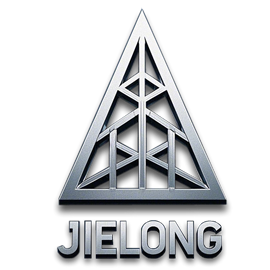
Scaffolding, a fundamental tool in the construction and maintenance industries, offers a wide array of practical uses. One of its notable applications is in the creation of observation platforms in plazas or other public areas. These platforms not only provide a vantage point for onlookers during events or for general public viewing but also serve as a safe and stable structure for workers during the construction or maintenance of surrounding amenities.
Moreover, scaffolding plays a crucial role in enhancing the efficiency of aerial operations. It functions as an ideal platform for transporting tools and materials. In construction projects, whether it's the building of skyscrapers or the erection of smaller structures, having a reliable means to move essential items to different heights is essential. Scaffolding enables workers to quickly access and transfer the necessary tools and materials, significantly improving productivity.
When it comes to the inspection and maintenance of large structures such as buildings and bridges, scaffolding becomes indispensable. It provides a secure and accessible platform for inspectors and maintenance crews to reach every part of the structure. For instance, in the case of a historic building, scaffolding allows preservationists to carefully examine and maintain the exterior facade, ensuring its structural integrity and historical charm are preserved. Similarly, for bridges, scaffolding enables engineers to conduct routine inspections, identify any signs of wear and tear, and carry out necessary repairs, thereby safeguarding the safety of the traveling public.
In summary, scaffolding's versatility in creating observation platforms, facilitating material transport, and enabling structure inspection and maintenance makes it an invaluable asset across various construction and maintenance projects.
FAQ
- What types of materials are commonly used to build scaffolding for these applications?
Scaffolding is typically constructed using materials like steel, aluminum, and wood. Steel scaffolding is known for its high strength and durability, making it suitable for heavy - duty applications such as building large bridges. Aluminum scaffolding is lightweight, which is beneficial for projects where easy mobility is required, like setting up observation platforms in public areas. Wood scaffolding, although less common in modern large - scale projects, can still be used for smaller - scale jobs or in areas where a more traditional approach is preferred. - How is scaffolding designed to ensure safety during use as an observation platform?
Safety is a top priority when designing scaffolding for observation platforms. Guardrails are installed around the perimeter of the platform to prevent people from falling. Toe - boards are added at the base of the platform to stop small objects from rolling off. The structure is designed to withstand the weight of multiple people and any additional loads, such as equipment. Additionally, anti - slip surfaces are often applied to the platform to reduce the risk of slips and falls. - Can scaffolding be customized for specific building or bridge inspection needs?
Yes, scaffolding can be highly customized for specific inspection needs. For building inspections, the scaffolding can be designed to reach hard - to - access areas, such as the upper floors of a high - rise building or around intricate architectural features. In bridge inspections, the scaffolding can be tailored to fit the unique shape and structure of the bridge, whether it's a suspension bridge, a beam bridge, or an arch bridge. Specialized brackets and connectors can be used to ensure a secure fit and easy access to all parts of the structure. - How does scaffolding improve the productivity of aerial operations?
Scaffolding improves the productivity of aerial operations in several ways. It provides a stable working surface, allowing workers to focus on their tasks without worrying about balance or stability. The ability to easily transport tools and materials to different heights reduces the time spent on climbing up and down ladders or using other less efficient methods of access. Workers can quickly move around on the scaffolding, which speeds up the process of carrying out tasks such as installing building components or conducting inspections. - What are the key considerations when using scaffolding for public area applications?
When using scaffolding in public areas, key considerations include ensuring public safety. This means setting up appropriate barriers and signage to keep the public away from the construction or maintenance area. The scaffolding should be designed to blend in with the surrounding environment as much as possible to avoid detracting from the aesthetic appeal of the public space. Noise and dust control measures should also be implemented to minimize the impact on the public. Additionally, all construction and maintenance work should be carried out during appropriate hours to avoid disrupting public activities.




